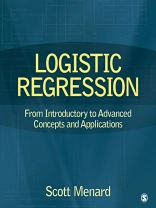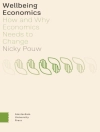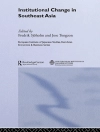In this text, author Scott Menard provides coverage of not only the basic logistic regression model but also advanced topics found in no other logistic regression text. The book keeps mathematical notation to a minimum, making it accessible to those with more limited statistics backgrounds, while including advanced topics of interest to more statistically sophisticated readers. Not dependent on any one software package, the book discusses limitations to existing software packages and ways to overcome them.
Key Features
- Examines the logistic regression model in detail
- Illustrates concepts with applied examples to help readers understand how concepts are translated into the logistic regression model
- Helps readers make decisions about the criteria for evaluating logistic regression models through detailed coverage of how to assess overall models and individual predictors for categorical dependent variables
- Offers unique coverage of path analysis with logistic regression that shows readers how to examine both direct and indirect effects using logistic regression analysis
- Applies logistic regression analysis to longitudinal panel data, helping students understand the issues in measuring change with dichotomous, nominal, and ordinal dependent variables
- Shows readers how multilevel change models with logistic regression are different from multilevel growth curve models for continuous interval or ratio-scaled dependent variables
Logistic Regression is intended for courses such as Regression and Correlation, Intermediate/Advanced Statistics, and Quantitative Methods taught in departments throughout the behavioral, health, mathematical, and social sciences, including applied mathematics/statistics, biostatistics, criminology/criminal justice, education, political science, public health/epidemiology, psychology, and sociology.
Содержание
Preface
Chapter 1. Introduction: Linear Regression and Logistic Regression
Chapter 2. Log-Linear Analysis, Logit Analysis, and Logistic Regression
Chapter 3. Quantitative Approaches to Model Fit and Explained Variation
Chapter 4. Prediction Tables and Qualitative Approaches to Explained Variation
Chapter 5. Logistic Regression Coefficients
Chapter 6. Model Specification, Variable Selection, and Model Building
Chapter 7. Logistic Regression Diagnostics and Problems of Inference
Chapter 8. Path Analysis With Logistic Regression (PALR)
Chapter 9. Polytomous Logistic Regression for Unordered Categorical Variables
Chapter 10. Ordinal Logistic Regression
Chapter 11. Clusters, Contexts, and Dependent Data: Logistic Regression for Clustered Sample Survey Data
Chapter 12. Conditional Logistic Regression Models for Related Samples
Chapter 13. Longitudinal Panel Analysis With Logistic Regression
Chapter 14. Logistic Regression for Historical and Developmental Change Models: Multilevel Logistic Regression and Discrete Time Event History Analysis
Chapter 15. Comparisons: Logistic Regression and Alternative Models
Appendix A: ESTIMATION FOR LOGISTIC REGRESSION MODELS
Appendix B: PROOFS RELATED TO INDICES OF PREDICTIVE EFFICIENCY
Appendix C: ORDINAL MEASURES OF EXPLAINED VARIATION
References
Index
Об авторе
Scott Menard is a Professor of Criminal Justice at Sam Houston State University and a research associate in the Institute of Behavioral Science at the University of Colorado, Boulder. He received his A.B. at Cornell University and his Ph.D. at the University of Colorado, Boulder, both in Sociology. His interests include quantitative methods and statistics, life course criminology, substance abuse, and criminal victimization. His publications include Longitudinal Research (second edition Sage 2002), Applied Logistic Regression Analysis (second edition Sage 2002), Good Kids from Bad Neighborhoods (Cambridge University Press 2006, with Delbert S. Elliott, Bruce Rankin, Amanda Elliott, William Julius Wilson, and David Huizinga), Youth Gangs (Charles C. Thomas 2006, with Robert J. Franzese and Herbert C. Covey), and the Handbook of Longitudinal Research (Elsevier 2008), as well as other books and journal articles in the areas of criminology, delinquency, population studies, and statistics.












